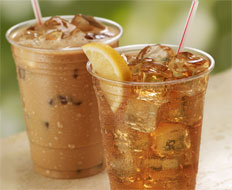While attending the Research Chefs Association’s annual conference in San Antonio this past March, I wandered into the Esquire Tavern, a historic downtown institution with a cocktail menu capable of tempting even the most ardent teetotaler.
Like hundreds of other hip restaurants and watering holes around the country, the Esquire has latched onto the cocktail revival with relish, using high-quality liquors, liqueurs, herbal infusions, seasonings, fresh fruit juices, bitters, sugars, and other ingredients both to engineer new and unusual libations and also to rework classics like the Pimm’s Cup, the Moscow Mule, the Dark and Stormy, and the Manhattan.
Esquire’s version of a Manhattan—traditionally composed of whiskey, sweet vermouth, and bitters—took considerable liberties with the form, beginning with its name: The Stinky Pig. The bourbon was infused with bacon. The vermouth was not the standard Gallo or Martini & Rossi, but a boutique Italian variety called Carpano Antica, which has overtones of herbs, figs, and cinnamon. And the entire affair was misted with mescal, the Mexican liquor derived from the sap of an agave plant.
My point in relaying my experience with this crafty craft cocktail isn’t to suggest that the future of quick-serve restaurant beverages is 80 or 120 proof. But what legions of so-called “mixologists” at the Esquire and innumerable other fine-dining and drinking establishments have seized upon is that deconstructing a beverage into its constituent parts, examining and reconsidering each ingredient individually, making some creative tweaks and substitutions, and reassembling the whole works as something new and decisively different. And I believe it can work just as well with nonalcoholic beverages.
The key to success, though, is to go about the task mindful of some of the major consumer trends and preferences shaping the beverage universe at the moment, not the least of which is a precipitous and challenging drop in carbonated soft drink consumption nationally. These new trends include:
Beverages as snacks and occasions. From morning energy drinks to afternoon tea to after-workout smoothies, more beverages have now positioned themselves into various slots in Americans’ daily routines. And as Frappuccinos, chai lattes, and other product lines have demonstrated for years now, beverages can be stand-alone special events, not just accompaniments.
Elusive loyalty. Particularly in the case of 16–30-year-old Millennials, the cohort also known as Generation Y, endless beverage variety and constant new-product introductions have made the task of instilling loyalty to a single brand or beverage type maddeningly challenging.
Wellness. The concept of wellness, as it pertains to beverages, isn’t synonymous with diet, sugar-free, or low-carb. Many consumers are now at least as concerned with what their drinks contain as with what they lack. Energy drinks, vitamin-enhanced and flavored waters, and the like all trade on what is added to make them healthful or beneficial.
Sophistication. As an increasing number of consumers gain more knowledge and experience with different kinds of global flavors and beverage types, they are becoming more discerning and selective. Agua frescas, green and white teas, boba teas, horchata (a Mexican rice-based beverage)—these and other formerly exotic specimens are continuing to make headway in U.S. markets.
For quick-serve establishments interested in broadening their beverage offerings to keep up with these trends, here are some suggestions offered in the spirit of today’s creative mixologists. In each case, we begin with a base (the equivalent of the main liquor in a great cocktail) and build around it. Consider these notions:
Make it a “specialtea.” These would be fusions of real brewed tea mixed with clarified fruit or vegetable juices. Clarified is key here: Most pure fruit juices are rather heavy and high in calories; filtering them can result in a clean, clear, relatively light liquid that makes for a more quaffable, thirst-quenching beverage. Coupled with the earthy, herbal qualities of a good green or black tea, the end product could be terrific.
Use dairy and grains to make it a meal. Latin American consumers have long enjoyed licuados, a refreshing mix of ice, fruit, and milk commonly sold from street carts. Combining this basic formula with the rice-based horchata would give this drink a little extra intrigue and make it more of a meal. There are drinks in Mexico made with corn masa, liquid yogurts studded with oats and grains, and emerging bottled drinks based on oats, either as smoothies or even with chunks.
Start with coffee and add a touch of interesting sweet. Not every sweetened coffee beverage needs to have the consistency of a milkshake. The addition of sweetened, condensed milk, various sugars or syrups, or coconut cream could create a pleasingly sweet, but not cloying or heavy, alternative to the norm.
Deliver drinkable desserts in a cup. Several chains have delivered plenty of variations on the basic theme of coffee infused with chocolate, vanilla, cinnamon, or caramel. Many of their proudest concoctions are essentially liquid desserts. So why not run with that idea and render some of consumers’ favorite desserts in beverage form? Working with a coffee base, it may be possible to use various syrup, herb, and fruit combinations to devise beverage equivalents of hot apple turnovers, red velvet cake, carrot cake, and so on. When you consider how successful mixologists have been at devising after-dinner drinks using creme de cacao, chocolate liqueurs, and flavored vodkas, you begin to get a sense of the possibilities—and the profit potential.












